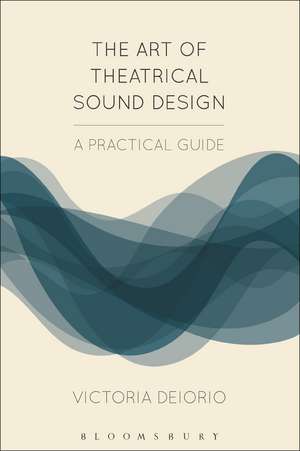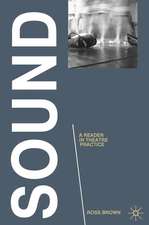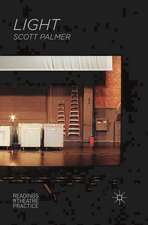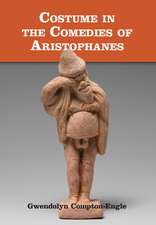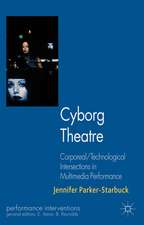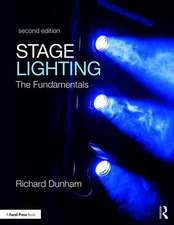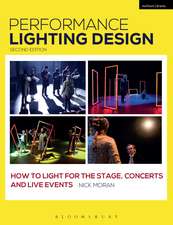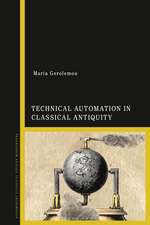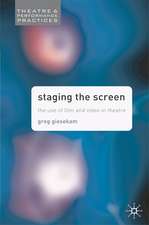The Art of Theatrical Sound Design: A Practical Guide
Autor Victoria Deiorioen Limba Engleză Paperback – 19 sep 2018
| Toate formatele și edițiile | Preț | Express |
|---|---|---|
| Paperback (1) | 173.19 lei 3-5 săpt. | +44.30 lei 5-11 zile |
| Bloomsbury Publishing – 19 sep 2018 | 173.19 lei 3-5 săpt. | +44.30 lei 5-11 zile |
| Hardback (1) | 539.84 lei 6-8 săpt. | |
| Bloomsbury Publishing – 19 sep 2018 | 539.84 lei 6-8 săpt. |
Preț: 173.19 lei
Preț vechi: 200.54 lei
-14% Nou
Puncte Express: 260
Preț estimativ în valută:
33.15€ • 36.02$ • 27.86£
33.15€ • 36.02$ • 27.86£
Carte disponibilă
Livrare economică 31 martie-14 aprilie
Livrare express 15-21 martie pentru 54.29 lei
Preluare comenzi: 021 569.72.76
Specificații
ISBN-13: 9781474257800
ISBN-10: 1474257801
Pagini: 240
Dimensiuni: 156 x 234 x 20 mm
Greutate: 0.39 kg
Editura: Bloomsbury Publishing
Colecția Methuen Drama
Locul publicării:London, United Kingdom
ISBN-10: 1474257801
Pagini: 240
Dimensiuni: 156 x 234 x 20 mm
Greutate: 0.39 kg
Editura: Bloomsbury Publishing
Colecția Methuen Drama
Locul publicării:London, United Kingdom
Caracteristici
The only current textbook to lead students through the of art sound design while showing them how to achieve their artistic goals onstage
Notă biografică
Victoria Deiorio is a critically acclaimed sound designer and composer for theatre and film, based in Chicago, USA. She is the Head of Sound Design for The Theatre School at DePaul University, Chicago, USA.
Cuprins
ContentsIntroduction Who am I? Why life choices matter How this book can help you PART ONE THEORETIC FOUNDATION Sound and Human Perception Humans as artists Aesthetic response Mind-body connection Biology, physics, and psychology Perception Describing sound Describing music Theatre artists The Art of Spatial Design Space and place Four aspects to auditory spatial awareness The architects Auditory subcultures Cultural value of acoustic context Nature of cultural silence Aural texture Soundmarks Subspaces The theater space Practical application Temporal and spatial spreading Reverberation Part 1 Exercises PART TWO CONTEXTUAL APPLICATION AND EXERCISESExercises to Develop Artistic Sound Design SkillsMoving forward Themes Repetition Punctuation Dynamics Ambience Drones Time Concrete vs. abstract History Exercises Using Tools Music in the 1600s Music in the 1700s Music in the 1800s Music 1900-1920 Music 1920-1940 Music 1940-1960 Music 1960-1980 Music 1980-2000 Music 2000-2010 PART THREE THE COLLABORATIVE PROCESS Applying Tools and Artistic Collaboration Working with text Theatrical application Collaborative Process of a Sound Designer Intellectual interpretation Design and production meetings Rehearsals Quiet time and level set The first moment sound is heard Tech Objective and subjective listening Previews Ownership Cohesion, Convention, and Implementation in Tech Cohesion Convention Cohesion in the tech process Cohesion with voice and movement Cohesion with your collaborators Communication for the Artistic Process Group dynamics Behavior and attitude Motivation and self-empowerment = Assertiveness Self-awareness skills Self-talk Taking self-responsibility Feedback The digital age-the first introduction Communication in the digital age-email etiquette Interpreting visual representation Cooperation vs. collaboration Communication Conclusion Bibliography Glossary
Recenzii
This fascinating book is informed by the author's wide range of experience, from performer in dance, music and acting to sound designer and director. Beginning with the physiology and psychology of human hearing, the book takes an eclectic path to an examination of successful artistic collaboration, through developmental and intellectual exercises, the study of cultural and historical influences and, ultimately, the reality of applying the lessons learned in a professional environment. As a rigorous and in-depth study of the art of sound design for theatre, it should become an invaluable asset to any serious student of this often under-appreciated and under-explored art.
[DeIorio] has artfully engaged the reader in the understanding of perception and meaning, acoustical context, design and intention, the breadth of musical expression, the conveyance of emotional values, an historical perspective on music, the designer's tools that can affect audience responses, and some valuable insight on collaboration between members of the artistic team... This book is important for anyone considering a creative career in the diverse world of Professional Sound Design. I heartily recommend it.
[DeIorio] has artfully engaged the reader in the understanding of perception and meaning, acoustical context, design and intention, the breadth of musical expression, the conveyance of emotional values, an historical perspective on music, the designer's tools that can affect audience responses, and some valuable insight on collaboration between members of the artistic team... This book is important for anyone considering a creative career in the diverse world of Professional Sound Design. I heartily recommend it.
